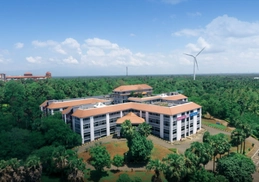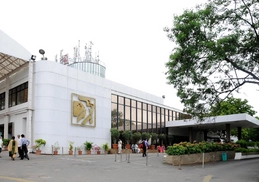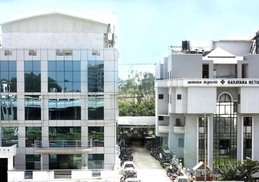Myopia is considered a refractory error and occurs due to an abnormal curvature of the cornea. In myopic persons the cornea will be more elongated than normal. The cornea takes an oval shape rather than a round one in normal persons. This results in problems with focussing in the retina, the portion of the eye where the images are formed. The light rays tend to focus in front of the retina than the retina itself. This leads to a lack of clarity in vision while viewing distant objects.
There are various types of myopia classified according to their cause and degree of visual impairment. Some of them are-
• Simple Myopia-This is the most common type of myopia. The degree is less than four to six dioptres.
• Degenerative myopia-This type of myopia is also referred to as malignant, pathological or progressive myopia. This type of myopia progresses through one’s life causing significant visual impairment. The clarity of vision will be below the normal standards even after correction.
• Pseudo myopia- This is a condition where distant objects appear blurred due to a defect in the accommodation of the retina.
• Nocturnal myopia- This type of myopia makes it difficult to see in low light conditions especially in the night.
• Near work Induced Transient Myopia (NITM)-This type of myopia can occur in otherwise normal individuals. As the name suggests this is due to focusing on an object close to the eyes for longer periods of time. It occurs only for a very short period of time.
• Instrument Myopia-This is common among those who use magnifying instruments for longer periods of time as part of their work. Those who continuously peer into microscopes or other magnifying glasses are more at risk.
• Acquired Myopia-This occurs due to certain disease conditions and long-term use of certain medicines. This is more common in diabetics and those on sulphonamide therapy. Over exposure to oxygen or oxygen toxicity can also be a cause.
Myopia is also classified according to the age of onset. The major types are
• Congenital myopia-present at birth
• Youth onset myopia- occurs in teenage years
• School myopia- usually occurs in the school going years
• Early adult onset myopia- occurs between the ages of 20 to 40
• Late adult onset myopia -occurs after the age of 40
Symptoms of myopia:
In adult’s myopia symptoms include-
• Distant objects appear blurred
• Squinting of the eye to see clearly
• Increased strain on the eyes and resultant headache
• Difficulty in driving
In children the symptoms are-
• Presence of a persistent squint
• Sitting very close to the television while watching
• Excessive and unnecessary blinking of the eyes
• A tendency to rub the eyes very frequently







